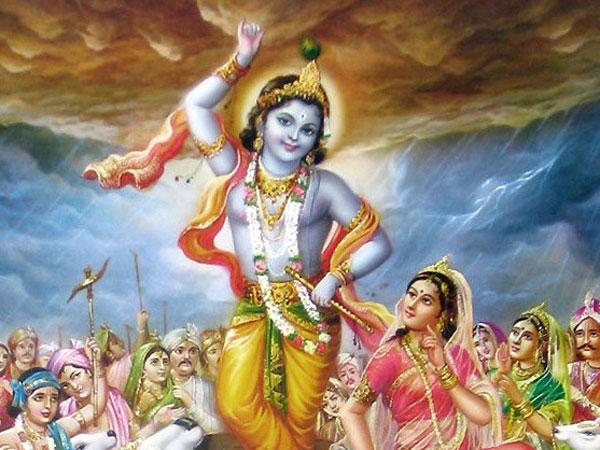KALASH – Sthaapna on day 1 that should be part of the alta until the day 5.
It is customary to set the pot on some grains of unbroken rice. This pot represents Varuna, the God of the Ocean, AND LAKSHMI as Mother Earth.
Now Kalash Puja:
KALASH (VARUNA) PUJA IS THE RE-CREATION OF THE EARTH BY YOURSELF AS BRAMHA
Fill the kalasha with water. Offer sandalwood powder,flowers and tulasi to decorate it. Place a coconut on top of the vessel and put your palms over the top of it while chanting the following mantras:
THE KALASH REPRESENTS THE RE-CREATION OF THE NEW EARTH OR NEW KALAPURSHA BECAUSE YOU ARE NOT HAPPY WITH THE OLD EARTH OR OLD LIFESTYLE ON EARTH
KALASHASYA MUKHAE VISHNUHU KANTAE RUDRAHASAMAASHRITAHA
MULAE TATRA STHITHO BRAHMA MADHYAE MAATRAGANAHASMRITAHA
We worship the kalasha (vessel above which the coconut is placed) invoking Mahavishnu at the mouth of the vessel. We invokeLord Rudra (an aspect of Shiva) at the neck of the kalasha and Brahma at thebase of the vessel. We invoke the Universal Mother Goddess and Her retinue in midst of the kalasha. Thus the male and female trinities are invoked. Salutations!
AUM AAJIGHRI KALASHAM MAHYAATVAA-VINSHATVINDAVAH
PUNROOJEE-NIVARTASYA SAANAH; SAHASRAMDHUKSHVORU-DHAARAA
PAYASVATEE PUNARMAA VISHATAA-DRIYAH.
AUM ATRA GANESH VARUNA GAURYA AADI KALSHAA DHISHTITDEVATAASARVE
IHAAGACHCHANTU IHA TISHTANTU SUPREETAA VARDAA BHAVANTU. ITI KALASH; PRATISHTAA SRI KALASH STHAAPYA SRI KALASH DEVATAA SRIVARUNA DEVATAAYE BHYO NAMAH.
AVAHANA – Invocation -Place the following ingredients on a pan leaf and insert into the Kalash
BY THIS YOU ARE PLACING THE MINERALS AND RESOURCES INSIDE THE NEW EARTH
Chandan (brown Sandalwood powder); Panch Amritam (a mixture of 5 ingredients)
Sindoor (Red Sandalwood powder); Pushpam.(White Flowers)
Hardee (Yellow Tumeric powder); Neemam (Neem Leaf)
Gingelly (White Sesame Seeds); Tulsi
Akshat (White Uncooked Rice); Yagno Pavitam (Holy Thread)
Dhaan (Unshelled Rice); Dhuba Grass(Durwa-dal Grass)
Lawang (Cloves); Naivediam (Mixture of Sugar, Milk Cream & Honey); Elaich (Unshelled Cardimon)
Coins (silver); Supari (Betel Nuts)
Vastram (Cotton Wool); Ritu-Ohal (Grapes or Raisons)
AUM YAH PHALY-NEERYAA APHALAA APUSHPAA YAASHCHA PUSHPINI NOH; BRIHASPATI PRASOO TAAS TAA NO MUNCHAN TVA GVANG HASAH.
Tie the thread on the Kalash – or Holythread is to be tied around the neck of the Kalash
AUM YUVAA SUVAASAAHA PARIBEET-AAGAATSAUSREYAAN-BHAVATI
JAAYAMAANAH; TAN DHEERAASAHA KAVAYA UNAYANTI SVAADHYOMANASAA DEVAYANTIH.
Placing the vegetation on Earth – 5 mango leaves are placed in the Kalash, with the stems falling inside the Kalash
KALASH PRARTHANA AUM KALASHSYA MUKHEVISHNU KANTHERUDRAH
SAMAASRITAH; MOOLE TATRASTHITO BRAHMAA MADYEMAATRIGANAH
SMRITAAHA.
THE WORSHIP OF VARUNA
With flowers in your hands, pray that your Earth has berenewed
Now it is the turn of Varuna, the god of the Ocean.Varuna is represented by the water you have taken in the kalasa or pot. SoVarunapujana is also known as kalasapujana. Take some water in your hand andsay:
KALASE VARUNAYA NAMAH SWAHA
Invoking all the places of pilgrimage in this pot, I worship it and bow to it.
After Kalsh Pooja light the following Diyas (lights of Ghee):
- Main Diya that should burn for five days if possible (from Dhanteras to Bhaia Dhuj) with the following mantra:
OM AGNEERJOYOTI JOYOTEERH AGNI SWAHA
SURYO JOYOTEER JOYOTIRH SURYO SWAHA
AGNEERVARCHO JOYOTEERVARCH SWAHA
SURYOVARCHO JOYOTEER VARCH SWAHA
JOYOTEE SURYO SURYO JOYOTEERH SWAHA
- Light the second Diya with the following mantra:
OM BHAGWATE DHANWANTARE NAMAH
- Light the third Diya using (mustered oil) with the following mantra:
OM YAMRAAJAAYE NAMAH SARWA BAADHAA NIWAARAN DEEPAM DIYETEE
- Light at least four (4) more Diyas of Ghee and decorate them around the alta where all the statues of Lord Ganesha, Mata Lakshmi & Lord Vishnu, Mata Saraswati and Mata Shakti are decorated. This is the place where you will be doing your prayers daily for at least the next five days.
The prayers and stuti to be followed once above has been fulfilled.
Now is the time for singing of bhajjans, kirtans and reading of religious books. Choose a nice katha and deliberate on it.
Those who wish to chant mantras, it should be done now using japa mala.
Finally, Arti is to be performed prior to conclusion of your pooja for the day. Arti should be performed for Ganesha, Lakshmi Mata, Saraswati Mata, Shakti Mata and Lord Vishnu.
Conclude your pooja with chamaa praathna as follows:
Ya Devi Sarva-bhuteshu, Lakshmi-rupenu-sansthitaa,
Namastasyae, Namastasyae, Namastasyae, Namaho-namah.
Tvameva Mata Cha Pita Tvameva
Tvameva Bandhuscha Sakha Tvameva
Tvameva Vidya Dravinam Tvameva
Tvameva Sarvam Mama Deva Deva
Mantra Heenum, Kriya Heenum, Bhakti Heenum Sureshwari
Yaj Poojeetum Mayadevi, Paripooran Tadastumay
Om, Dhyaoh Shaantih, Antariksha Shaantih,
Prithavi Shaantih, Aapah Shaantih, Oshadhyah Shaantih,
Vanaspatyah Shaantih, Vishvedevah Shaantih, Brahma
Shaantih, Sarvam Shaantih, Shaantih Eva Shaantih,
Saa Maa Shaantir-edhi,
Om Shaantih, Shaantih, Shaantih


